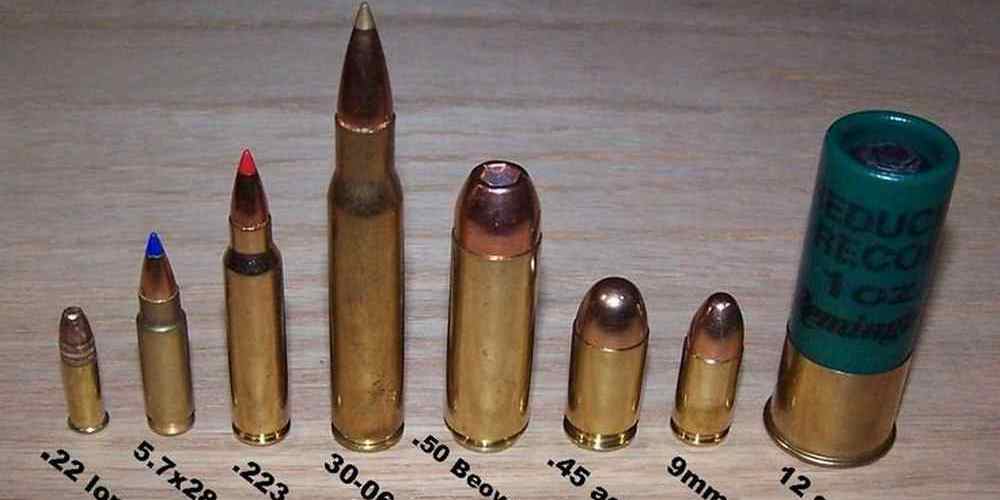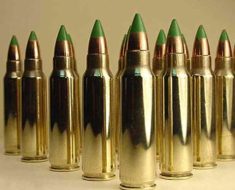Unleash the power of precision with AR15 ammunition.
Ballistics of AR15 Ammunition
The AR15 is a popular rifle platform known for its versatility and performance. One key factor that contributes to the effectiveness of the AR15 is the ammunition it uses. Understanding the ballistics of AR15 ammunition is crucial for maximizing the rifle’s potential in various shooting scenarios.
When it comes to ballistics, AR15 ammunition is designed to deliver consistent and reliable performance. The most common caliber for the AR15 is the .223 Remington, although the rifle can also be chambered in other calibers such as 5.56x45mm NATO. These calibers are known for their flat trajectory and high velocity, making them ideal for long-range shooting.
The ballistics of AR15 ammunition are influenced by several factors, including bullet weight, velocity, and ballistic coefficient. Bullet weight refers to the mass of the projectile, with heavier bullets typically offering better penetration and stability in flight. Velocity, on the other hand, determines how fast the bullet travels and how much energy it delivers upon impact. A higher velocity generally results in better terminal performance.
The ballistic coefficient of a bullet is a measure of its ability to overcome air resistance. Bullets with a high ballistic coefficient retain their velocity and energy better over long distances, resulting in more accurate and consistent shots. Manufacturers often design AR15 ammunition with high ballistic coefficients to maximize performance.
Another important aspect of AR15 ammunition ballistics is the terminal ballistics, which refers to how the bullet behaves upon impact with the target. Factors such as bullet construction, velocity, and energy transfer all play a role in determining the terminal performance of AR15 ammunition. For example, bullets designed for hunting are typically designed to expand upon impact, creating a larger wound cavity and increasing the chances of a quick and humane kill.
Transitional phrases like “in addition,” “furthermore,” and “on the other hand” can help guide the reader through the complexities of AR15 ammunition ballistics. By understanding the science behind AR15 ammunition performance, shooters can make informed decisions when selecting ammunition for their rifles. Whether for target shooting, hunting, or self-defense, choosing the right ammunition can make a significant difference in the rifle’s effectiveness.
In conclusion, the ballistics of AR15 ammunition are a critical factor in determining the rifle’s performance. Factors such as bullet weight, velocity, and ballistic coefficient all play a role in how the ammunition behaves in flight and upon impact. By understanding these principles, shooters can make informed decisions when selecting ammunition for their AR15 rifles. With the right ammunition, shooters can maximize the potential of their rifles and achieve better accuracy and terminal performance in various shooting scenarios.
Terminal Performance of AR15 Bullets
When it comes to the performance of AR15 ammunition, understanding the terminal ballistics of the bullets is crucial. Terminal ballistics refers to the behavior of a projectile upon impact with a target, and it plays a significant role in determining the effectiveness of a bullet in a real-world scenario. In the case of AR15 bullets, terminal performance is influenced by a variety of factors, including bullet design, velocity, and energy transfer upon impact.

One of the key factors that determine the terminal performance of AR15 bullets is bullet design. The design of a bullet can greatly impact its ability to penetrate and expand upon impact with a target. For example, hollow point bullets are designed to expand upon impact, creating a larger wound channel and increasing the likelihood of incapacitating the target. On the other hand, full metal jacket bullets are designed to penetrate deeply without expanding, making them more suitable for shooting through barriers or body armor.
Velocity is another important factor that affects the terminal performance of AR15 bullets. The velocity at which a bullet travels can influence its ability to penetrate and transfer energy upon impact. Higher velocities generally result in greater energy transfer and expansion upon impact, while lower velocities may lead to less penetration and expansion. This is why it is important to consider the velocity of a bullet when selecting ammunition for your AR15.
Energy transfer upon impact is also a critical factor in determining the terminal performance of AR15 bullets. When a bullet strikes a target, it transfers kinetic energy to the target, causing damage to tissue and organs. The amount of energy transferred upon impact can vary depending on factors such as bullet design, velocity, and the composition of the target. Bullets that transfer more energy upon impact are more likely to cause significant damage to the target, increasing the likelihood of incapacitating the target.
In addition to bullet design, velocity, and energy transfer, other factors can also influence the terminal performance of AR15 bullets. These include bullet weight, bullet construction, and the angle of impact. Heavier bullets generally penetrate deeper and transfer more energy upon impact, while lighter bullets may fragment upon impact, causing more damage to tissue. The construction of the bullet, such as the presence of a jacket or core material, can also affect its terminal performance.
The angle of impact is another important factor to consider when evaluating the terminal performance of AR15 bullets. The angle at which a bullet strikes a target can influence its ability to penetrate and transfer energy. For example, bullets that strike a target at a perpendicular angle are more likely to penetrate deeply and transfer energy effectively, while bullets that strike at an oblique angle may deflect or fragment upon impact.
In conclusion, the terminal performance of AR15 bullets is influenced by a variety of factors, including bullet design, velocity, energy transfer, bullet weight, construction, and angle of impact. Understanding these factors can help you select ammunition that is best suited for your needs and intended use. By considering these factors, you can ensure that your AR15 ammunition performs optimally in real-world scenarios, increasing your chances of success in the field.
Factors Affecting Accuracy in AR15 Ammunition
When it comes to shooting accuracy, the performance of AR15 ammunition plays a crucial role. There are several factors that can affect the accuracy of AR15 ammunition, and understanding the science behind these factors can help shooters improve their performance on the range.
One of the key factors that can affect the accuracy of AR15 ammunition is the quality of the bullet itself. The shape and weight of the bullet can have a significant impact on its trajectory and stability in flight. Bullets that are poorly constructed or have inconsistencies in their shape can veer off course, leading to inaccurate shots.
Another important factor to consider is the velocity of the bullet. The speed at which a bullet travels can affect its stability and accuracy. Bullets that are too slow may not have enough energy to maintain a straight trajectory, while bullets that are too fast can become unstable and veer off course. Finding the right balance of velocity is essential for achieving optimal accuracy.
The rifling of the barrel is also a critical factor in determining the accuracy of AR15 ammunition. Rifling refers to the grooves inside the barrel that cause the bullet to spin as it travels down the barrel. This spinning motion helps stabilize the bullet in flight, improving its accuracy. Barrels with well-defined rifling and a consistent twist rate are essential for achieving precise shots.
The type of powder used in the ammunition can also affect its performance. Different powders burn at different rates, which can impact the velocity and pressure of the bullet as it travels down the barrel. Using the right powder for your specific ammunition can help ensure consistent performance and accuracy.
In addition to these factors, the overall quality of the ammunition itself can play a significant role in its accuracy. Ammunition that is manufactured to high standards with quality control measures in place is more likely to perform consistently and accurately. Investing in high-quality ammunition from reputable manufacturers is essential for achieving optimal performance on the range.
It’s also important to consider external factors that can affect the accuracy of AR15 ammunition, such as wind and environmental conditions. Wind can cause bullets to drift off course, while extreme temperatures or humidity can affect the performance of the powder and the bullet itself. Being aware of these external factors and making adjustments as needed can help shooters achieve more accurate shots.
In conclusion, the science behind AR15 ammunition performance is complex and multifaceted. Factors such as bullet quality, velocity, rifling, powder type, and overall ammunition quality all play a role in determining accuracy. By understanding these factors and making informed choices when selecting and using ammunition, shooters can improve their performance and achieve more accurate shots on the range.
Velocity and Energy of AR15 Rounds
When it comes to understanding the performance of AR15 ammunition, two key factors to consider are velocity and energy. These two elements play a crucial role in determining the effectiveness and impact of each round fired from an AR15 rifle. In this article, we will delve into the science behind velocity and energy, and how they contribute to the overall performance of AR15 rounds.
Velocity refers to the speed at which a bullet travels down the barrel of a firearm. It is typically measured in feet per second (fps) and plays a significant role in determining the trajectory and accuracy of a bullet. The higher the velocity, the flatter the trajectory of the bullet, which means it will travel further before dropping due to gravity. This is particularly important for long-range shooting, where maintaining a high velocity is crucial for hitting targets accurately.
In the case of AR15 ammunition, velocity can vary depending on the specific type of round being used. For example, a standard 5.56mm round typically has a velocity of around 3,000 fps, while a heavier 7.62mm round may have a lower velocity of around 2,500 fps. The velocity of a round is determined by a combination of factors, including the weight of the bullet, the amount of gunpowder used, and the length of the barrel.
Energy, on the other hand, refers to the amount of force that a bullet carries as it travels through the air. It is measured in foot-pounds (ft-lbs) and is a key indicator of the stopping power of a round. The energy of a bullet is directly related to its velocity and weight, with heavier bullets typically carrying more energy than lighter ones traveling at the same speed.
In the case of AR15 ammunition, energy is an important factor to consider when assessing the effectiveness of a round for hunting or self-defense. Rounds with higher energy levels are more likely to cause significant damage to a target upon impact, making them more effective for stopping threats quickly. This is why many shooters opt for heavier rounds with higher energy levels when using their AR15 rifles for defensive purposes.
The relationship between velocity and energy is a complex one, with both factors influencing the performance of AR15 rounds in different ways. For example, a round with high velocity but low energy may travel quickly but lack the stopping power needed to effectively neutralize a threat. On the other hand, a round with high energy but low velocity may not travel as far or as accurately, limiting its effectiveness at longer ranges.
In conclusion, velocity and energy are two critical factors that determine the performance of AR15 ammunition. Understanding how these elements interact and influence each other is essential for choosing the right rounds for your specific shooting needs. Whether you are looking for long-range accuracy or maximum stopping power, considering the velocity and energy of your AR15 rounds is key to achieving optimal performance in any shooting situation.
Penetration and Expansion of AR15 Bullets
When it comes to understanding the performance of AR15 ammunition, two key factors to consider are penetration and expansion. These factors play a crucial role in determining the effectiveness of a bullet in various shooting scenarios. In this article, we will delve into the science behind penetration and expansion of AR15 bullets, and how they impact the overall performance of the ammunition.
Penetration refers to the ability of a bullet to penetrate through a target, such as a piece of ballistic gel or a solid object. The penetration depth of a bullet is influenced by several factors, including the velocity of the bullet, the weight of the bullet, and the design of the bullet tip. In general, bullets with higher velocities and heavier weights tend to penetrate deeper into a target.
The design of the bullet tip also plays a significant role in determining penetration. For example, bullets with a pointed tip are more likely to penetrate deeper into a target compared to bullets with a flat tip. This is because a pointed tip creates less resistance as it travels through the target, allowing the bullet to maintain its momentum and penetrate further.
Expansion, on the other hand, refers to the ability of a bullet to expand upon impact with a target. When a bullet hits a target, the force of impact causes the bullet to deform and expand, creating a larger wound cavity. This expansion can be crucial in causing significant damage to the target and stopping a threat effectively.
The expansion of a bullet is influenced by factors such as the design of the bullet jacket, the material of the bullet core, and the velocity of the bullet. Bullets with a jacket made of copper or other soft metals are more likely to expand upon impact compared to bullets with a jacket made of harder materials. Additionally, bullets with a hollow point design are specifically engineered to expand upon impact, creating a larger wound cavity and increasing the chances of stopping a threat.
In terms of AR15 ammunition, penetration and expansion are critical factors to consider when selecting the right ammunition for your needs. For self-defense purposes, ammunition that offers deep penetration and significant expansion upon impact is ideal. This type of ammunition is designed to cause maximum damage to a threat and stop them effectively.
For hunting purposes, on the other hand, ammunition that offers controlled expansion and sufficient penetration is preferred. This type of ammunition is designed to deliver a clean and ethical kill, ensuring that the animal is taken down quickly and humanely.
In conclusion, penetration and expansion are key factors that determine the performance of AR15 ammunition. Understanding the science behind these factors can help you make informed decisions when selecting the right ammunition for your needs. Whether you are looking for self-defense ammunition or hunting ammunition, choosing ammunition that offers the right balance of penetration and expansion is crucial for achieving optimal performance.





